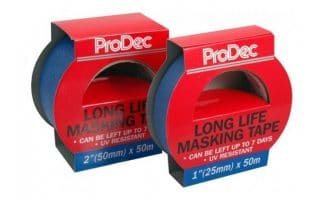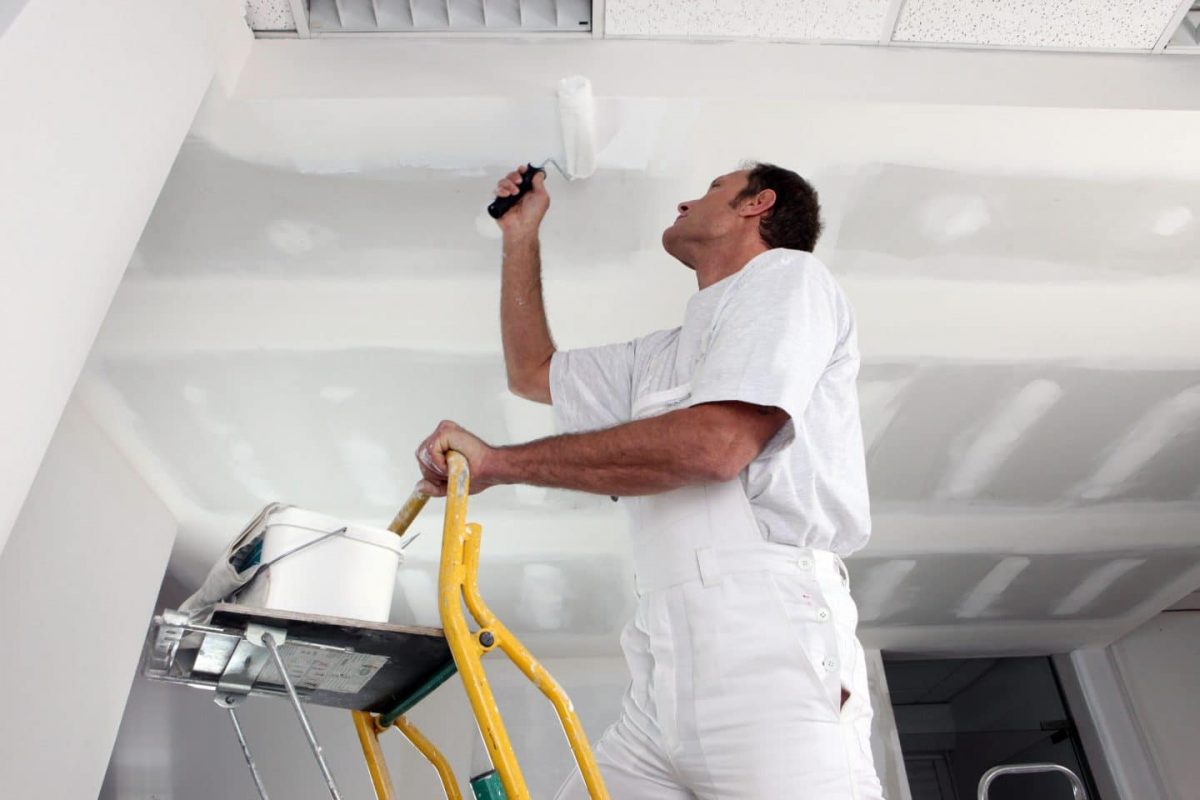Today, we continue our series on How To Paint Like A Pro. In Promain‘s article we take a look at a how to cut in paint and how this could not only save you time, but will also give you that professional looking finish we all strive for.
So what is cutting in? Read on to find out more:
FAQ: What Is Cutting In?
Many people will have heard the term, but do not necessarily know what it actually means. This can be especially true if you are not a painter by trade. ‘Cutting in’ simply means using a brush to paint areas that are too tricky for a roller. These areas include corners, skirting boards, window trims, walls where two different colours meet, and of course, the line where the ceiling meets the wall. It is usually done free hand but can also be done with the help of masking tape if preferred.
FAQ: Do You Need to Do The Cutting In Before Or After Using A Roller?
Cutting in should be done before you start painting the main walls or ceiling with a roller. You can use painters tape to mask off areas (such as around the windows) if you do not feel confident in using free hand. A general painting guide is to do the trim first, followed by the ceilings and finally the walls.
FAQ: Do I Need Special Equipment For Cutting in?
You do not need specialist equipment or a special cutting in brush. A standard 2 – 2.5 inch brush will be sufficient, however, some people prefer to use an angled paint brush for cutting in. The best paint brush for cutting in is really personal preference.
Whether you use an angled or standard brush, make sure it is something that you are comfortable using. We do recommend that you purchase a good quality brush though, as the last thing you want to be doing is spending half the time removing loose bristles from your new paint work.
How To Cut In Paint: Edge Painting Tools

There are various edge painting tools, or paint cutting in tools on the market today. These could help you, particularly where a straight line is needed (such as the ceiling line).
However if you do not have one of these and are not confident enough to try and paint free hand, then painters tape or masking tape can be beneficial. It should be noted that this will increase preparation time.
Make sure you purchase a good quality tape to help avoid the risk of ‘bleeding’ under the tape. If you do use masking tape, make sure that this is removed straight away whilst the paint is still wet. This way you can easily remove any drips with a damp cloth.
Practice Makes Perfect!
If you are attempting true cutting in (free hand) then it is worth practising first. Take a section of the wall that you are going to paint over anyway and then using either masking tape or a chalk line as your guide, practice painting in a straight line until you feel confident enough to start on a real area.
How To Cut In Paint
With all your preparation done and practice runs behind you, you are now ready to start the task of cutting in.
Start by dipping your brush into the paint down to around 1 inch. You do not want to cover the entire brush as this will lead to too much paint being applied to the area and just as likely over your hands and arms! Pat the brush against the inside of the paint tin or tray to remove any excess.
Placing the brush on the wall use light pressure and drag the paintbrush up towards the line that you want to create. The bristles on the brush will fan out to a tip, which will create the straight line. It is sometimes a good idea to start just below the line you want to create and slowly build up to that line with a second pass. This will also help the paint to spread evenly.
Make Sure Your Cutting In Is Sufficient
Remember that a large reason for cutting in is that the area could be too tricky for a roller. Therefore, make sure that you paint a wide enough band that the roller can reach the desired area without hitting the ceiling or door frame etc.
How To Cut In Paint: Using An Airless Sprayer
If you are painting the room with an airless sprayer, you will need to mask the area significantly. Make sure that you cover any walls or radiators etc. Bear in mind that although painting a room with an airless sprayer is quicker, there is much more margin for error where the cutting in is concerned. Paint can bleed under the masking tape leaving you with a less than perfect straight line.
What If I Don’t Have Time For Cutting In?
If you want a professional looking finish cutting in is essential. All of your hard work can be let down by crooked lines, paint splatters on window sills or skirting boards and overlapping colours. Although preparation can be quite time consuming, if you are able to do the cutting in free hand rather than with masking tape, this will save lots of time.
The most important thing is to not rush the job. Rushing through the cutting in to get on to the walls or ceiling quicker can result in sloppy lines. This could leave you wanting to start all over again, therefore it is always best to take your time and get it right first time.
Technical Advice
We hope that you have found this guide to cutting in useful. If you have any questions that have not been answered here then please contact our Technical Team who are available Monday to Friday and will be happy to help not only with techniques but can also advise on the most suitable products for your needs.
You may also find it useful to read our guides on How To Cut In Paint, ‘How to paint a ceiling‘ and ‘How to paint a room‘, both of which can be found via the links above or in our ‘How To Guides‘ in the Promain Knowledge Hub.




